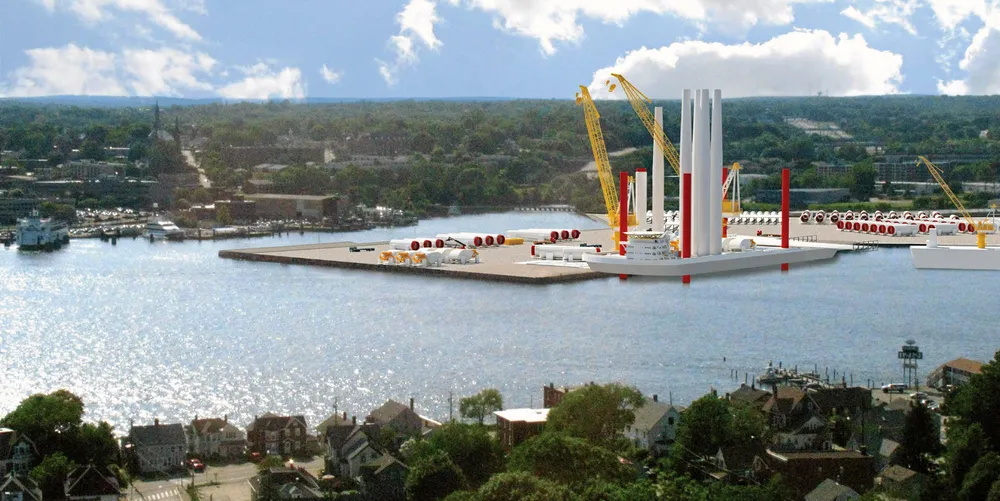Key US federal permit at last for $235m Connecticut State Pier offshore wind revamp
Final approval clears New London port to press ahead with redevelopment to become major manufacturing and marshalling hub

The $235m Connecticut State Pier offshore wind redevelopment finally received a key federal permit after lengthy delays that strained relations with backers including global development giant Orsted.
The US Army Corps of Engineers (ACE) – which has jurisdiction over all activities in US inland and coastal waters – issued its permit on 16 December, enabling the Connecticut Port Authority (CPA) to authorise the project to proceed.
“We applaud the decision by the ACE to approve the project's federal permit,” said CPA executive director John Henshaw in a statement. “Paired with the state permit approved by DEEP [Department of Energy and Environmental Projection] in August, the project has achieved all regulatory approvals for in-water work. This major milestone caps two comprehensive state and federal permitting processes that began more than two years ago.”
The developer issued a series of ultimatums requiring that the permit be issued by 31 August, then 15 September, and again by 15 October, each of which was missed without Orsted exercising its opt-out clause. Orsted-Eversource have committed $77.5m to the project which when completed by 31 January 2023 will have an annual capacity to marshal 324MW.
Port infrastructure a bottleneck
Lack of port infrastructure capable of handling the burgeoning offshore wind sector is a key bottleneck facing the industry in the race to meet the national goal of 30GW by 2030, and State Pier is one of multiple port projects aimed at capitalising on the expanding market in the US northeast Atlantic coast.
“This project positions New London to become the premier commercial east coast hub for the offshore wind sector,” Connecticut Governor Lamont said in a statement. “Connecticut remains a leader in the transition to renewable energy and the fight against climate change… [and] the local investment, job growth, and development opportunities associated with this project are real.”
The redevelopment project is expected to generate 460 construction jobs involved in dredging, fill-placement, and marine construction, including the creation of a new Central Wharf area and heavy lift pad capable of handling massive offshore wind components. The site will include pre-assembly of offshore wind components expected to create 400 full-time jobs.
The $1tn Bipartisan Infrastructure act passed last month includes $17bn for port upgrades that will help enable the offshore wind rollout.
Along with offshore wind, State Pier will continue to support other existing long-term breakbulk operations for steel, coil steel, lumber, copper billets, as well as other cargo.
(Copyright)